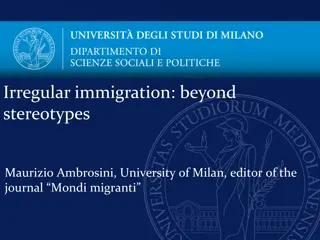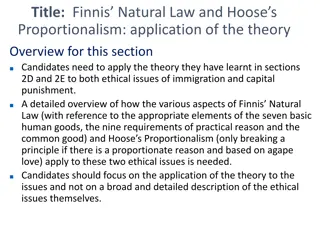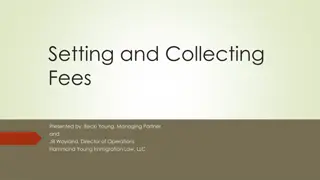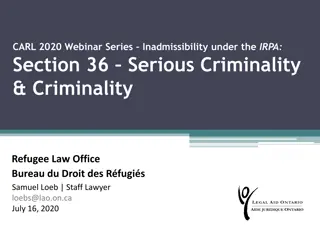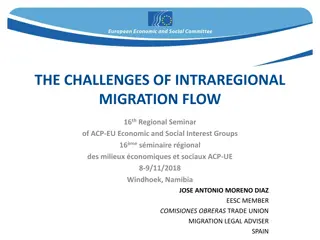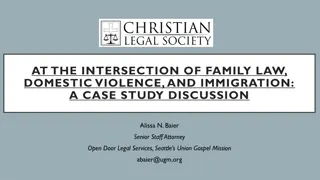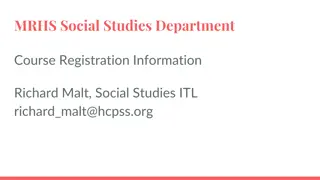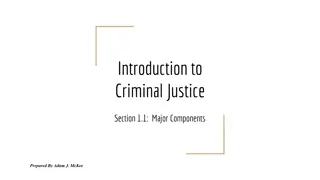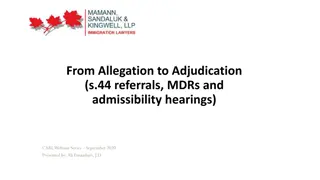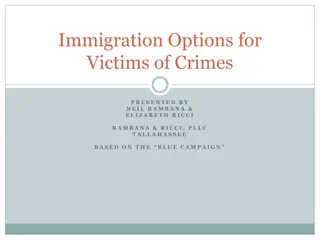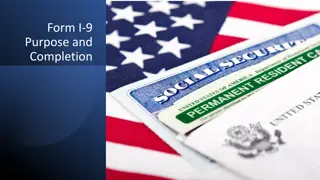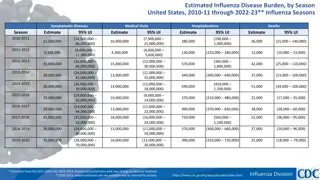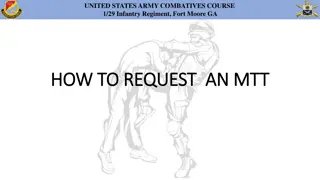The Immigration Issue in the United States
Explore the history of immigration in the U.S., from pre-1819 to current state, covering legal vs. illegal immigration. Understand the evolution of immigration laws, including key acts and milestones. Learn about rights and responsibilities of citizens, as well as immigration statistics and facts about illegal immigration in the U.S. Delve into the reasons why people want to come to the U.S. and the experience of living with a family of illegal immigrants for 30 days.
Download Presentation

Please find below an Image/Link to download the presentation.
The content on the website is provided AS IS for your information and personal use only. It may not be sold, licensed, or shared on other websites without obtaining consent from the author. Download presentation by click this link. If you encounter any issues during the download, it is possible that the publisher has removed the file from their server.
E N D
Presentation Transcript
The Immigration Issue History of immigration in the U.S. video Current state of immigration (illegal vs. legal) The candidates on immigration
History (Animated History Map) Pre-1819: No restrictions 1819: Immigration Act (Ship captains provide info to customs officials) 1840s: Wave of immigrants (Irish, German, Mexican, Chinese, etc.) 1868: 14thAmendment --all people born in the U.S. are citizens 1880s: Chinese Exclusion Act, Immigration Act of 1882 (tax, categories of ineligible immigrants) 1920s: Quota acts limit numbers of immigrants, U.S. Border Patrol created 1940s: Alien Registration Act, Chinese Exclusion laws repealed 1950s: Immigration and Naturalization Service created to enforce new nationality- based quotas 1965: End of quota system 1986: Immigration Control and Reform Act (meant to tighten Mexican border, crack down on illegal immigrants) 2001: Department of Homeland Security replaces INS; ineligibility/deportation for terrorist activities Today: majority of immigrants are from Asia and Latin America; Republicans and Democrats agree on the need for change in federal immigration laws, but http://www.annenbergclassroom.org/files/documents/immigration.pdf
Rights Freedom to express yourself. Freedom to worship as you wish. Right to a prompt, fair trial by jury. Right to vote in elections for public officials. Right to apply for federal employment requiring U.S. citizenship. Right to run for elected office. Freedom to pursue life, liberty, and the pursuit of happiness.
Responsibilities Support and defend the Constitution. Stay informed of the issues affecting your community. Participate in the democratic process. Respect and obey federal, state, and local laws. Respect the rights, beliefs, and opinions of others. Participate in your local community. Pay income and other taxes honestly, and on time, to federal, state, and local authorities. Serve on a jury when called upon. Defend the country if the need should arise.
5 facts about illegal immigration in the U.S. 1 There were 11.1 million unauthorized immigrants in the U.S. in 2014 2 Mexicans made up 52% of all unauthorized immigrants in 2014 3 The number of unauthorized immigrants from nations other than Mexico grew by 325,000 since 2009, to an estimated 5.3 million in 2014 4 Six states accounted for 59% of unauthorized immigrants in 2014: California, Texas, Florida, New York, New Jersey and Illinois 5 A rising share of unauthorized immigrants have lived in the U.S. for at least a decade.
Why do people want to come to the U.S.? What is it like to live with a family of illegal immigrants for 30 days? 30 Days (Family of illegal immigrants)
Summary of candidates views according to ballotpedia.com Hillary Clinton supports immigration reform with a pathway to citizenship, would establish an Office of Immigrant Affairs to coordinate immigration policies, and supports Obama s executive orders on the DACA (Deferred Action for Childhood Arrivals) and DAPA (Deferred Action for Parents of Americans and Lawful Permanent Residents) programs. Donald Trump wants to build a wall between the U.S. and Mexico, proposed a ban on Muslims entering the U.S., and supports rescinding Obama s executive orders on the DACA and DAPA programs. Jill Stein opposes deportation, supports the DREAM Act (Development, Relief, and Education for Alien Minors), and supports the creation of a legal status and path to citizenship. Gary Johnson would make it as easy as possible for individuals without criminal records who want to come to the U.S. to work to get work visas and supports comprehensive immigration reform.
Trumps ideas Immigration Reform That Will Make America Great Again (from donaldjtrump.com) video The three core principles of Donald J. Trump's immigration plan 1. A nation without borders is not a nation. There must be a wall across the southern border. 2. A nation without laws is not a nation. Laws passed in accordance with our Constitutional system of government must be enforced. 3. A nation that does not serve its own citizens is not a nation. Any immigration plan must improve jobs, wages and security for all Americans.
Clintons ideas (hillaryclinton.com) video sound clip Comprehensive immigration reform. Defend President Obama s executive actions known as DACA and DAPA against partisan attacks. Do everything possible under the law to protect families Enforce immigration laws humanely. Support immigrant integration.


